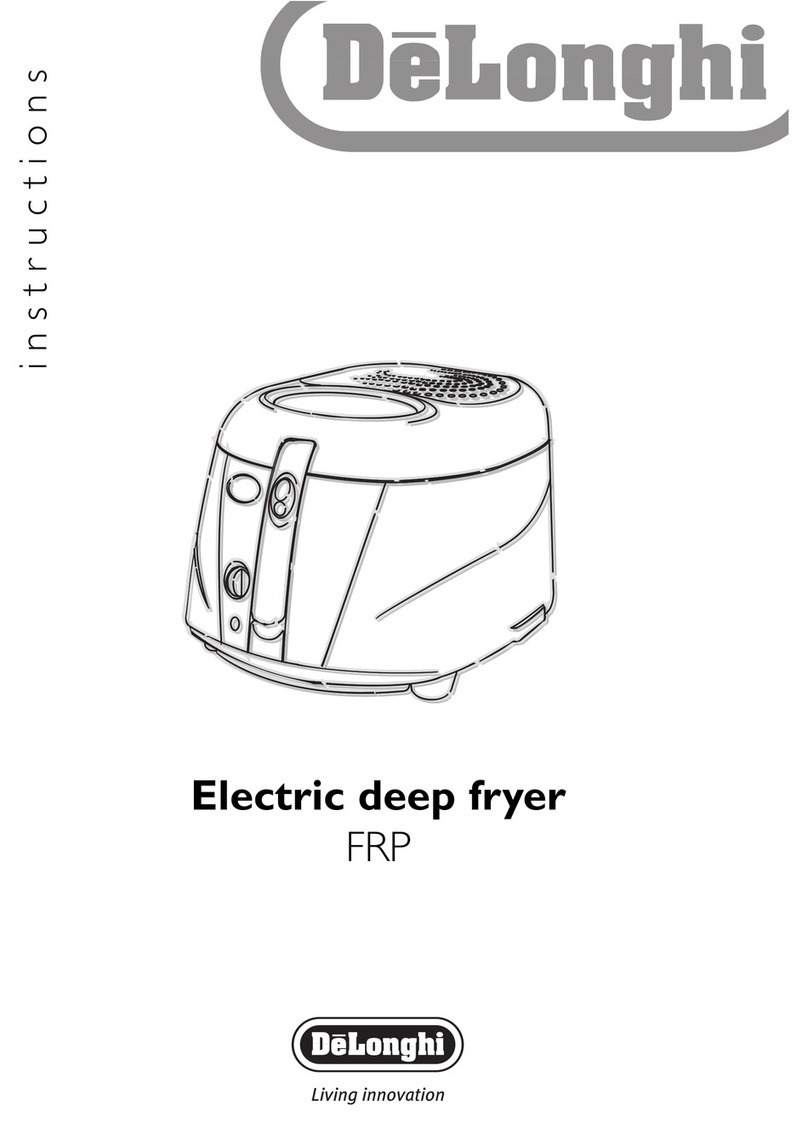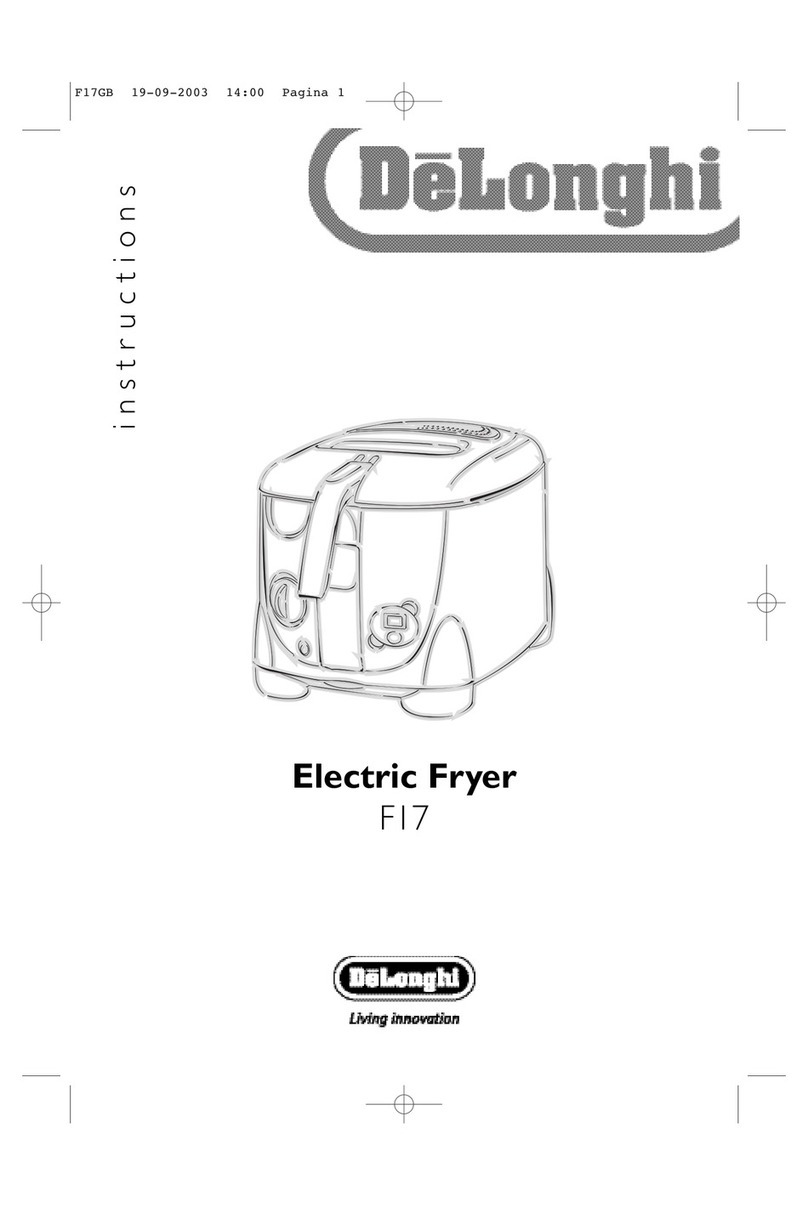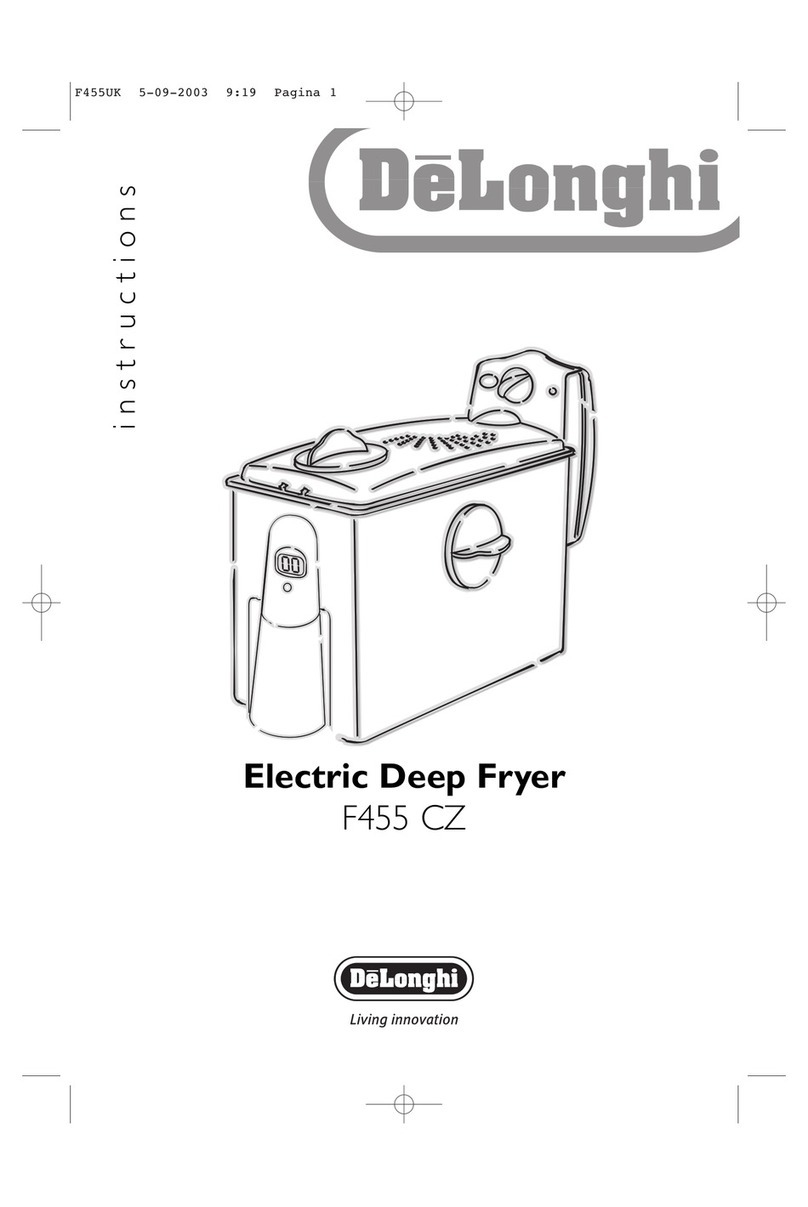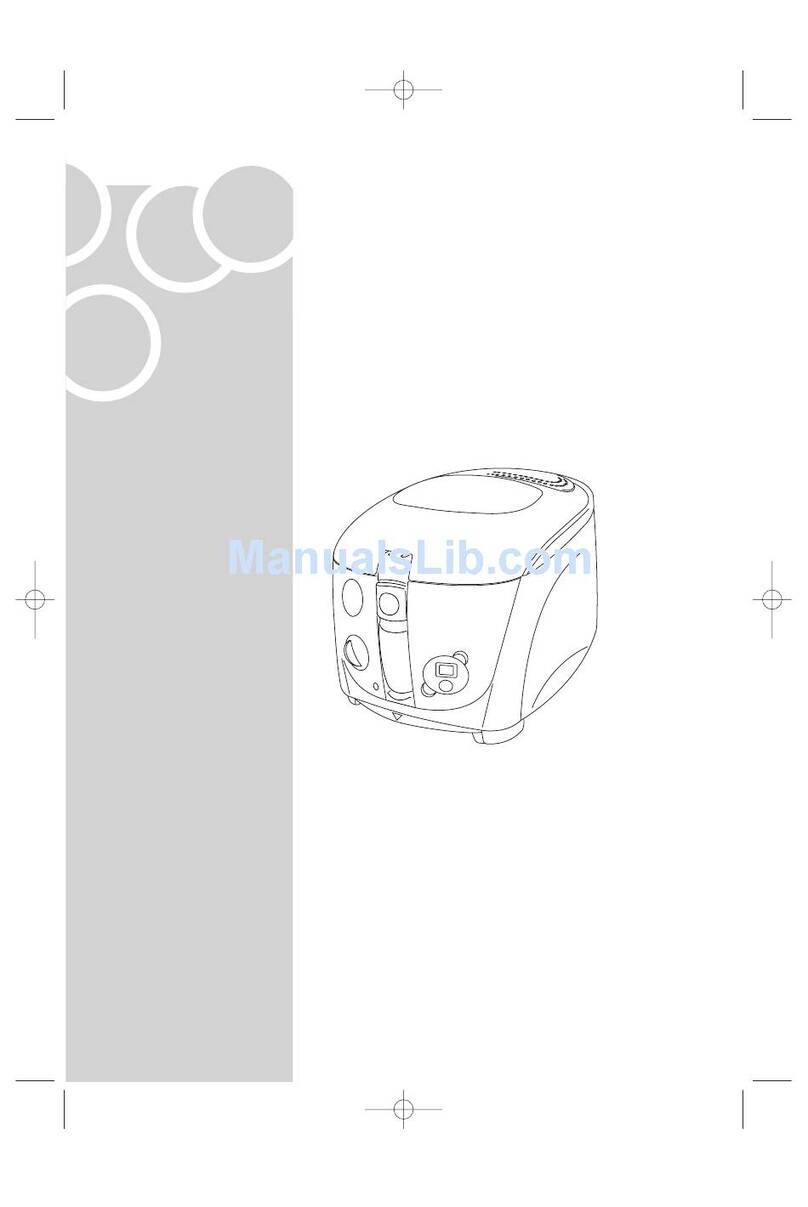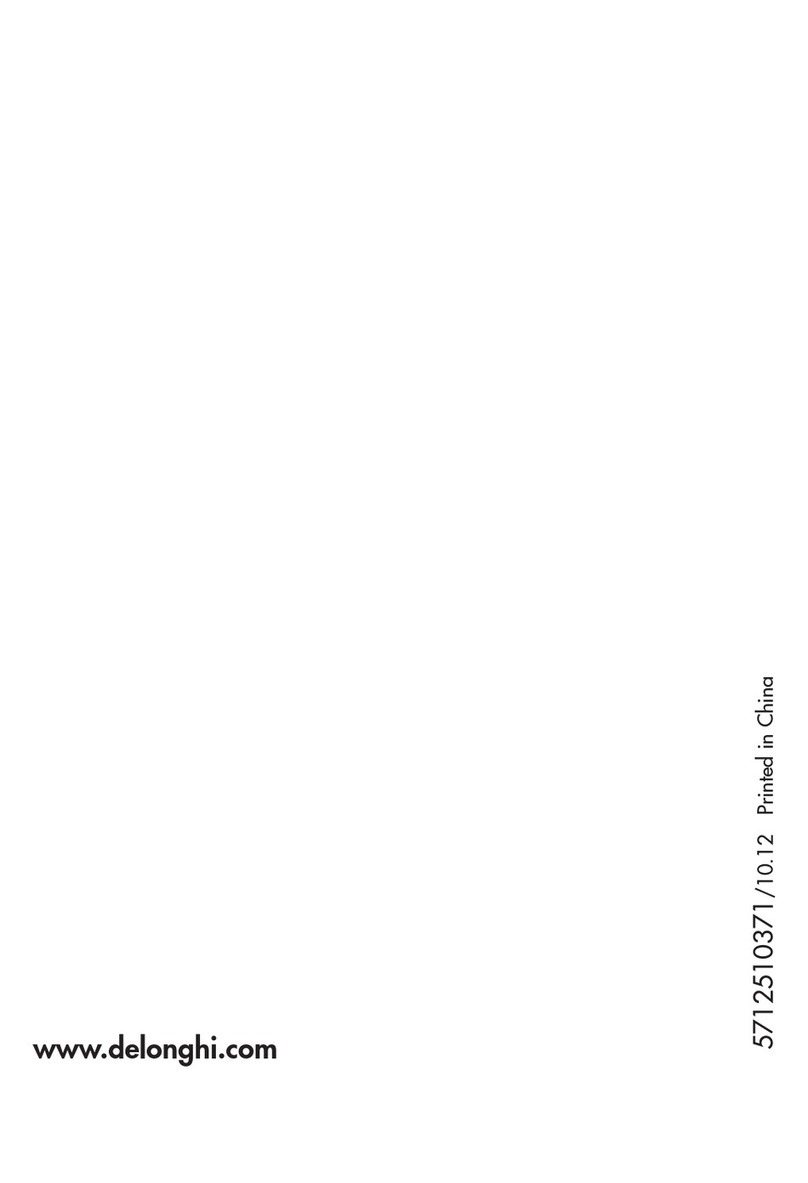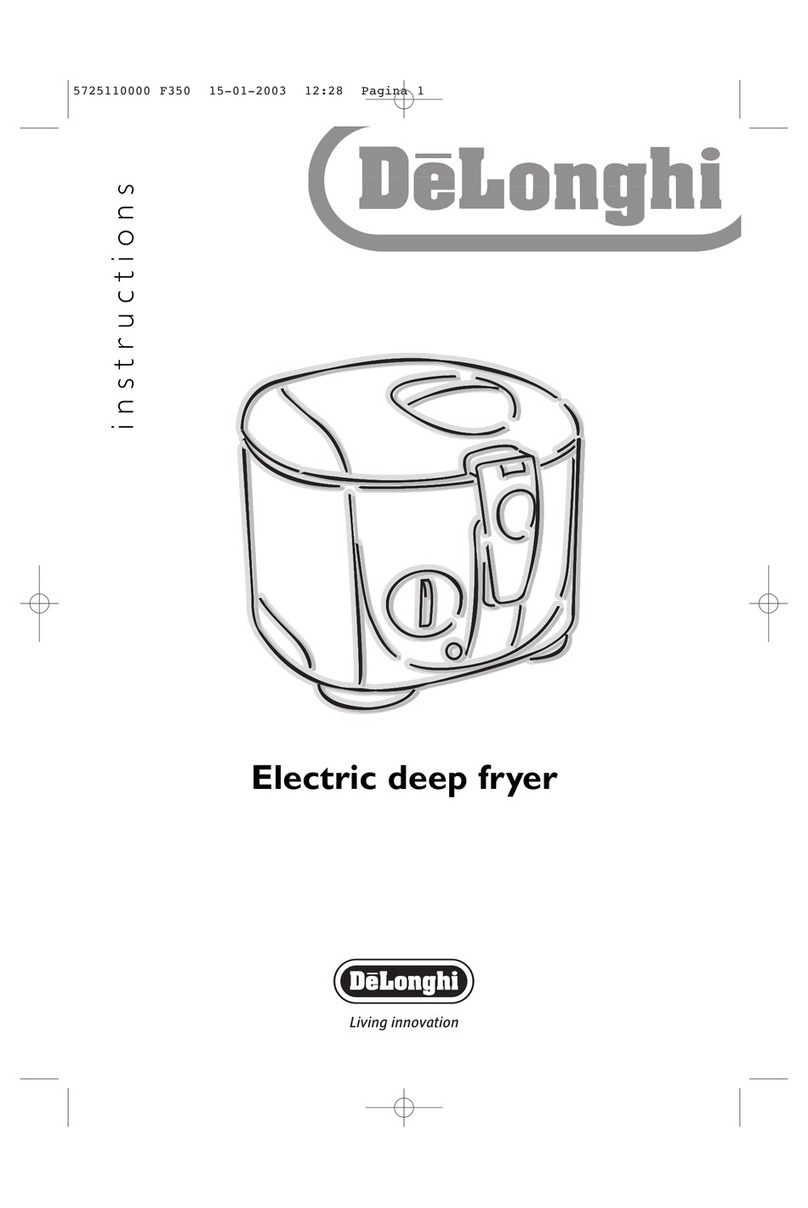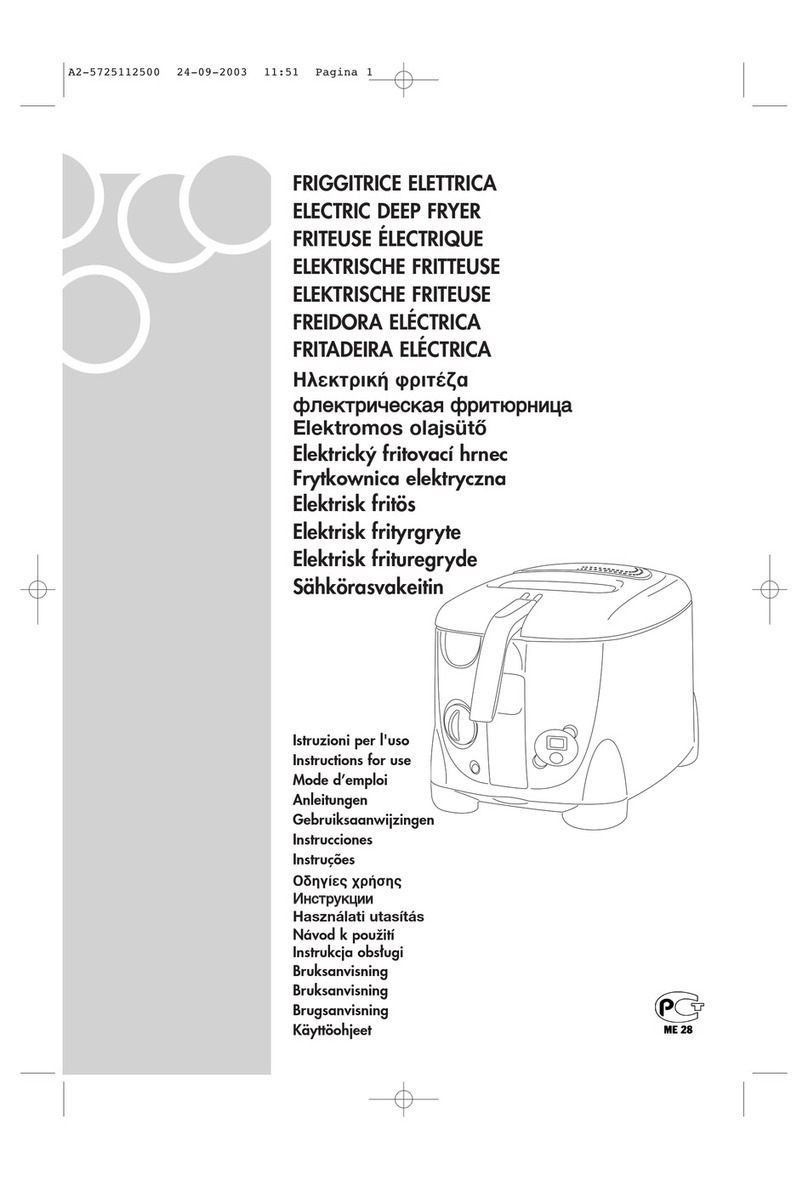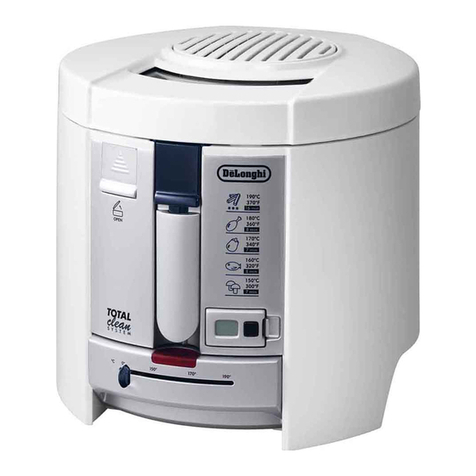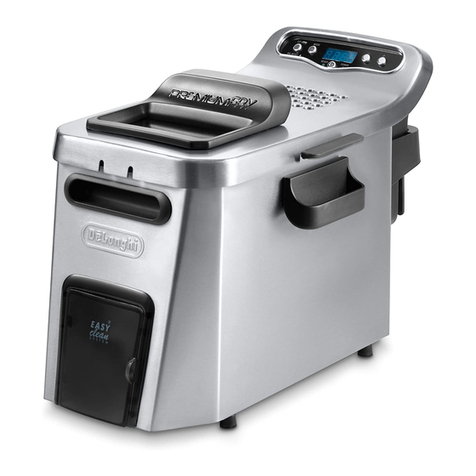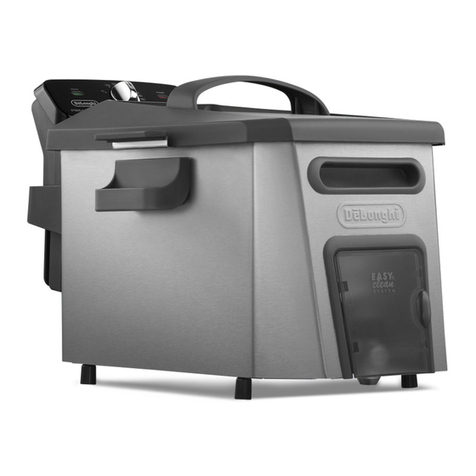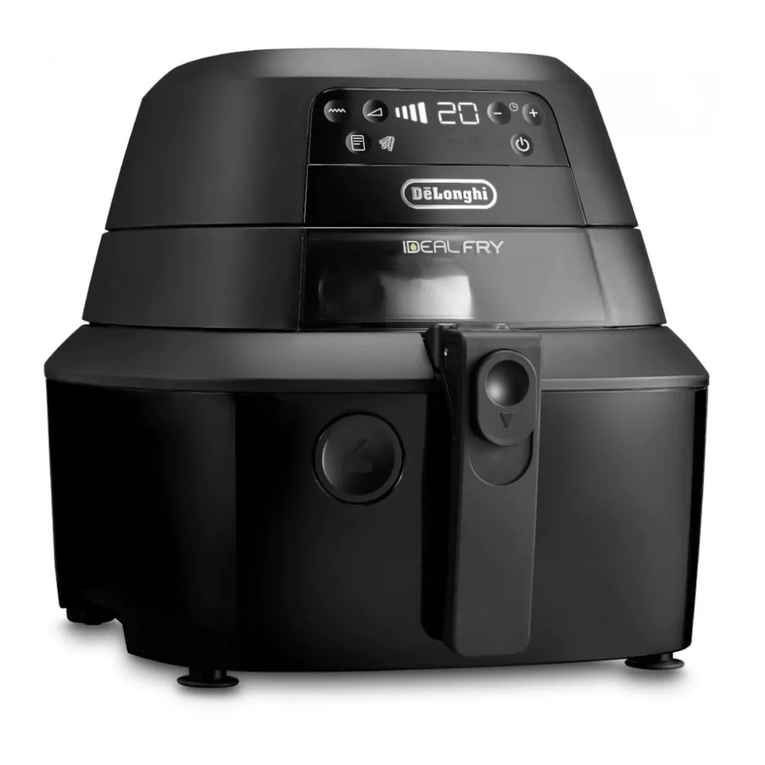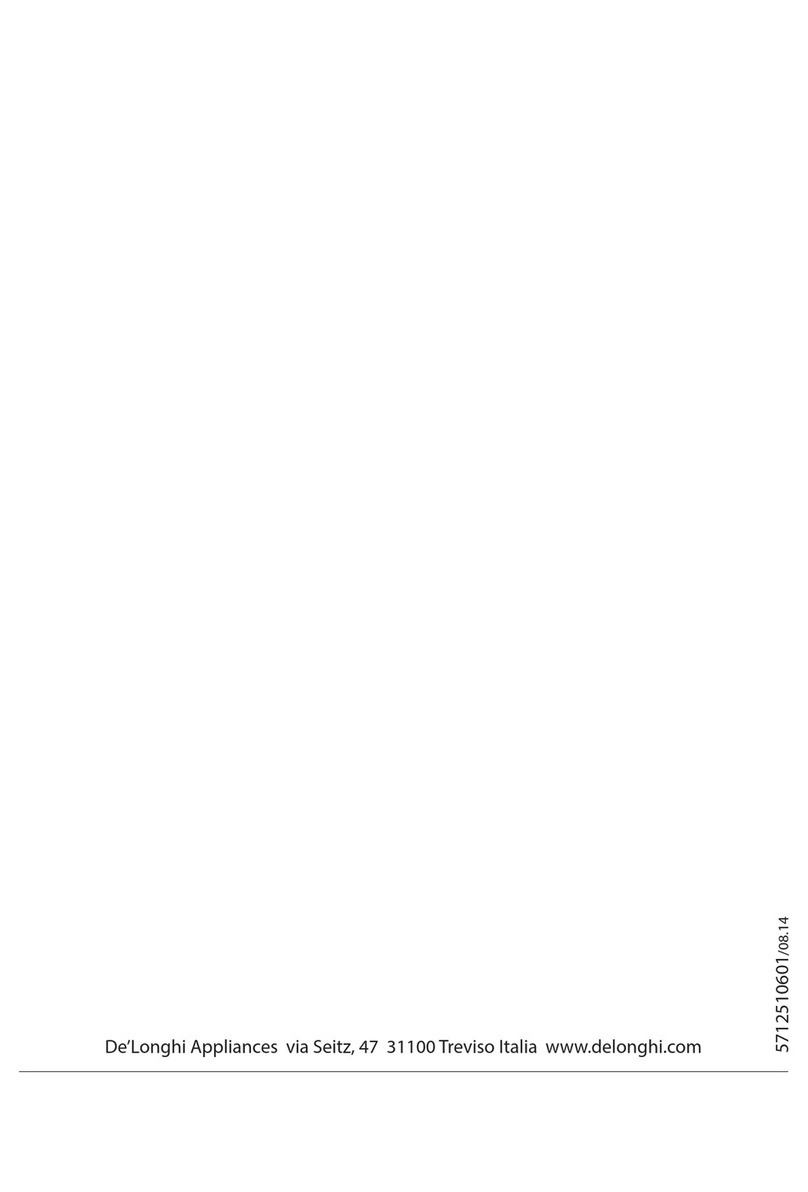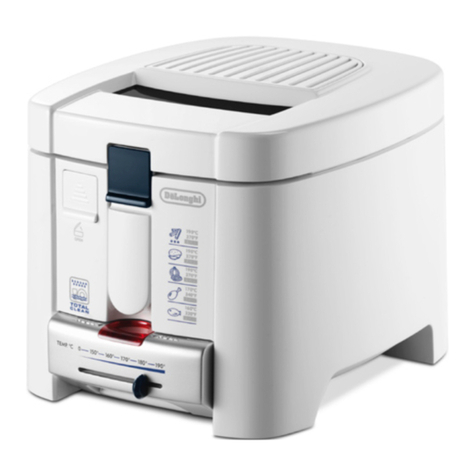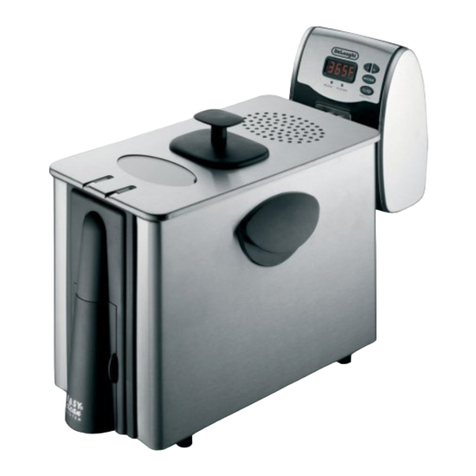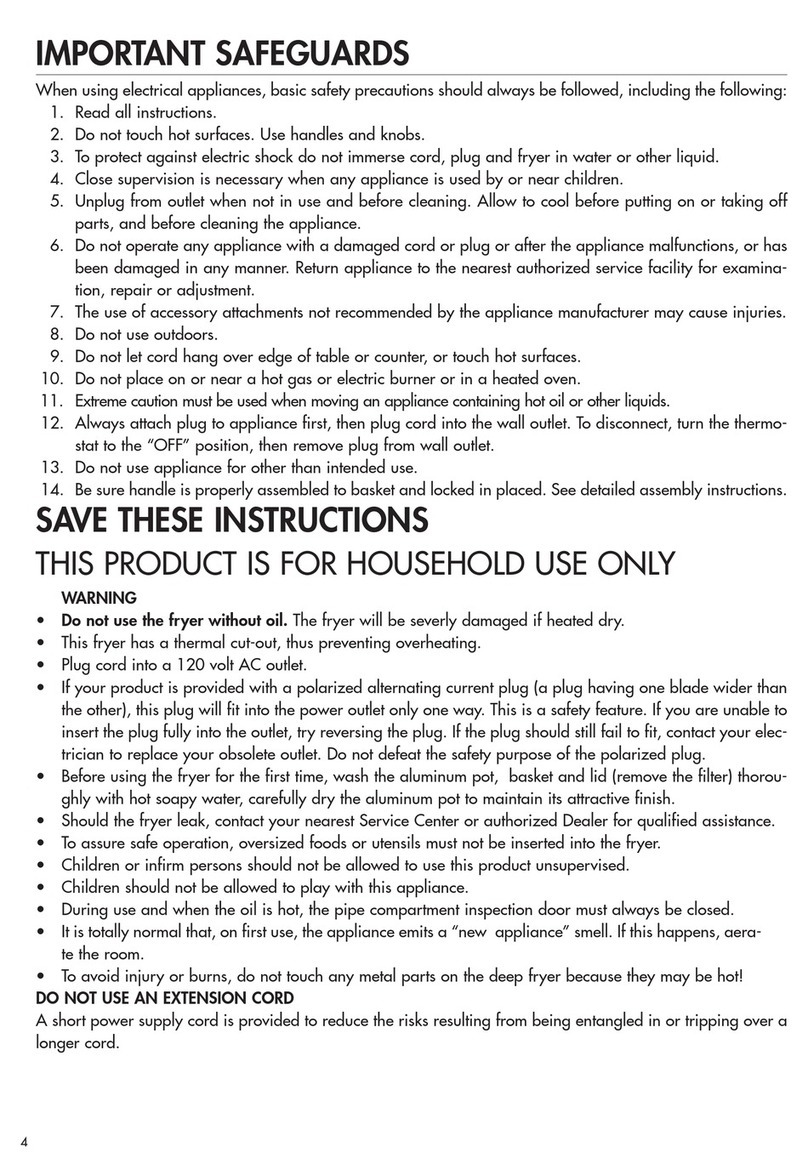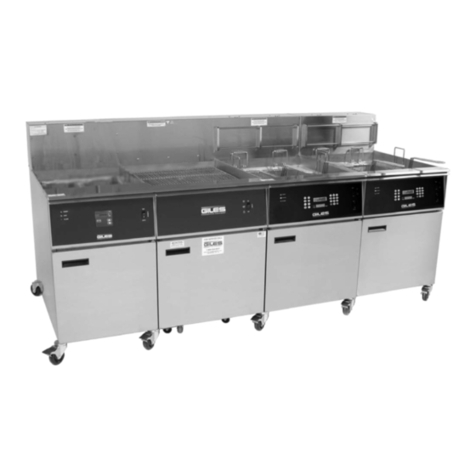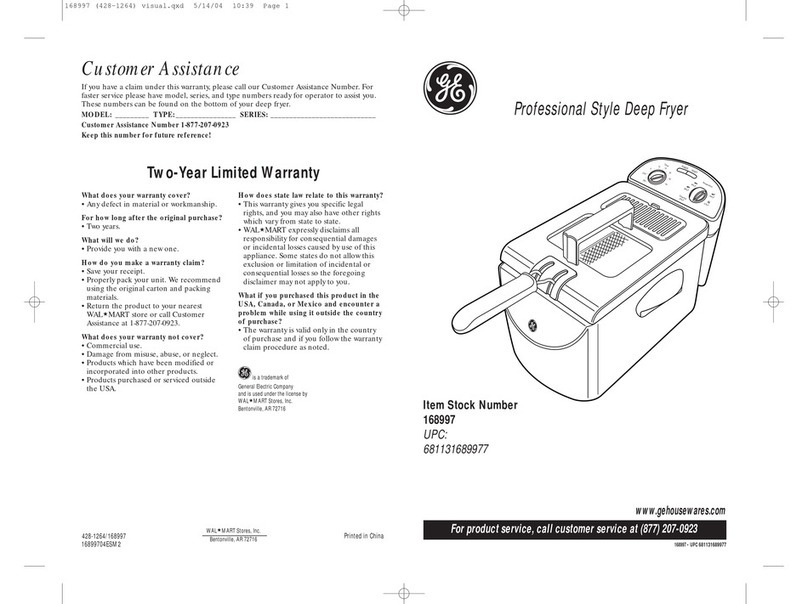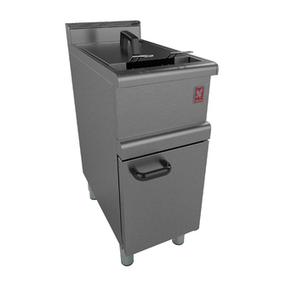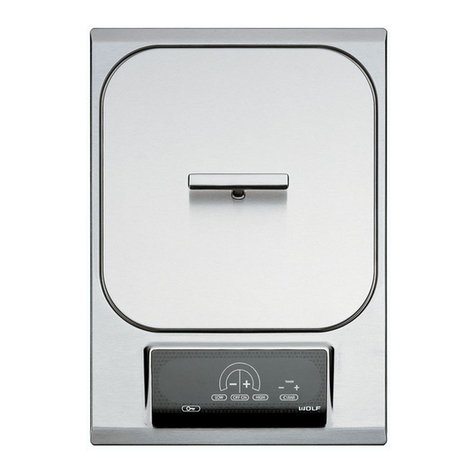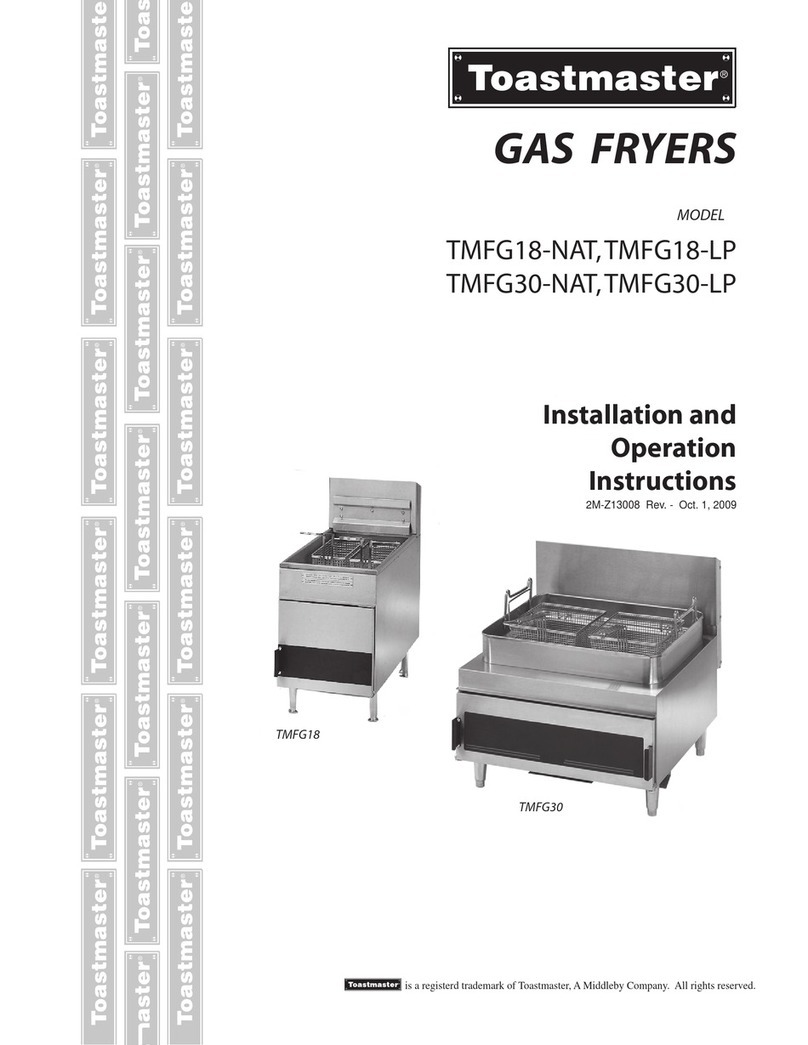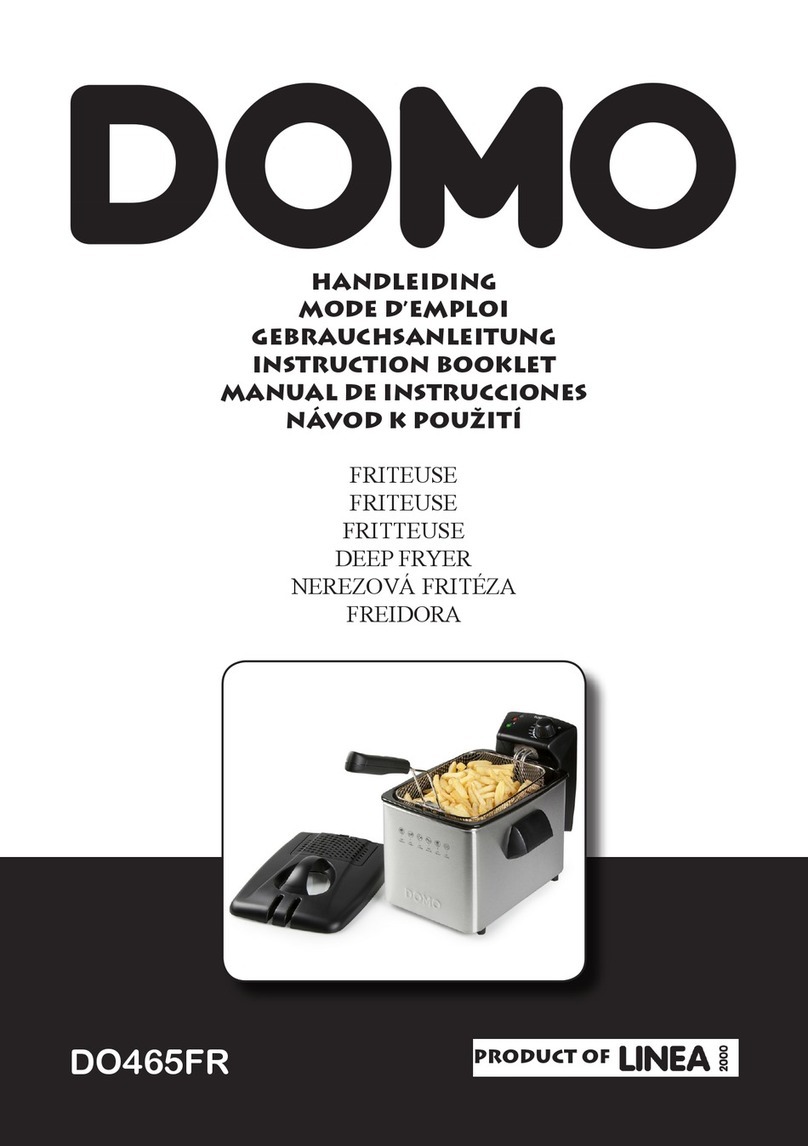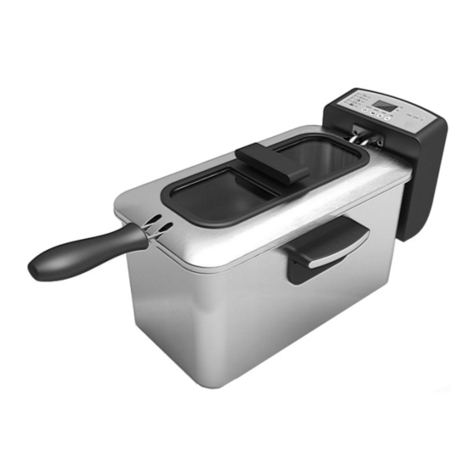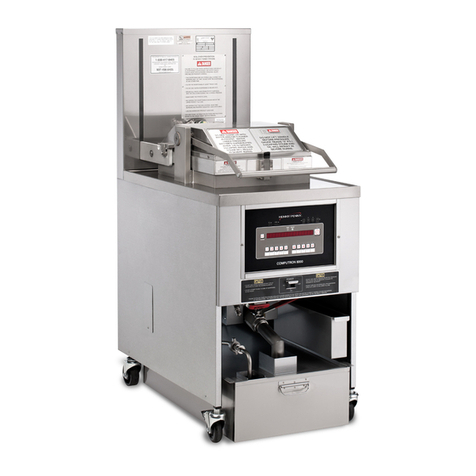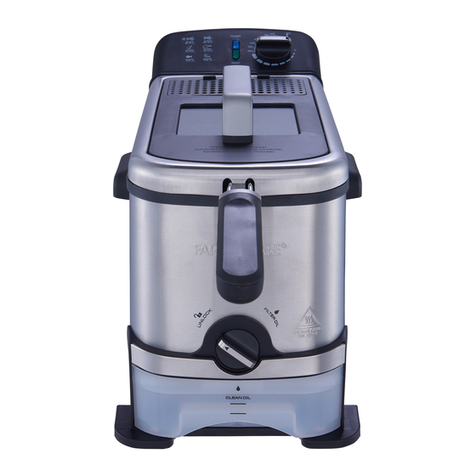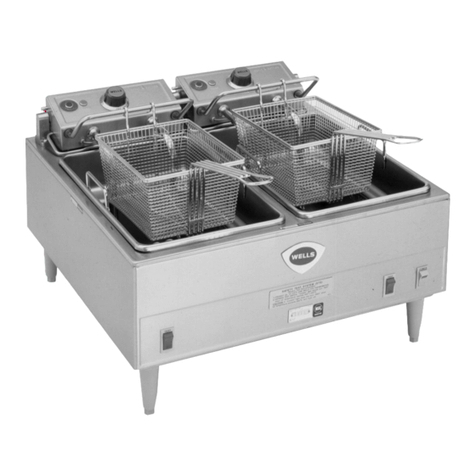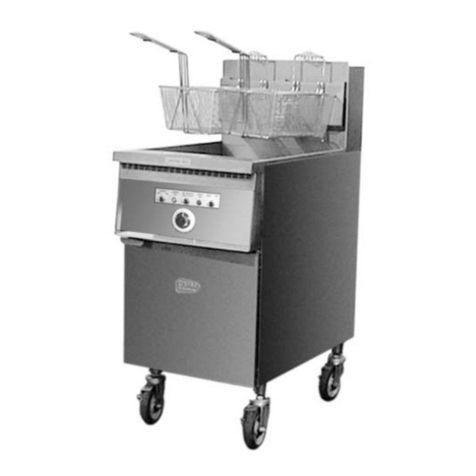End of frying time
When the selected frying time is elapsed, rifit basket
handle (fig. 4) and check that food is golden brown as
desired.
In the models fitted with a viewing window this check
can be carried out by looking through the window
without opening the lid.
When the food is completely cooked, switch the
appliance off by setting the thermostat control to “Off”
until the switch is heard to click off. Leave the contents
to drip for a moment and then open the lid and remo-
ve the basket without shaking it too vigorously.
For two-stage frying (e.g. potatoes), lift the basket at
the end of the first stage, wait for the indicator light to
go off and then lower the basket into the oil a second
time (see enclosed table).
FILTERING OF OIL OR FAT
It is advisable to filter the oil or fat after frying in order
to remove any food particles, especially if the food is
coated in breadcrumbs or flour. Food particles remai-
ning in the oil tend to burn, which causes the oil to dete-
riorate more quickly.
1. Remove the lid (fig. 5) and empty the tank from one
of its sides (fig. 6 – left or right side edge of the
tank).
2. Use a sponge or a paper kitchen towel to remove
any deposits from the bowl.
3. Hook the basket to the bowl and place the supplied
paper filter in the bottom of the basket (fig. 7).
Spare filters can be obtained from your dealer or
from our service centres.
4. Pour the oil very slowly into the basket, ensuring
that it does not overflow from the filter (fig. 8).
Note:After filtering the oil, it can be left in the fryer.
However, should a long period of time pass
between one frying and the next, it is advisable to
store the oil in a closed container, not exposed to
direct light in order to avoid its deterioration. Oil
used for frying fish should be stored separately
from oil used for other foods.
☛If fat is used for frying, this should not be allowed
to cool too much, otherwise it may solidify.
5
CHANGING THE ANTI-ODOUR FILTERS
With time the odour-eater filters placed inside the lid
lose their effectiveness. A change of colour in the filter,
visible through hole of fig.9 on the inside cover, shows
that the filter needs to be changed. To replace it, remo-
ve plastic filter cover (fig.10) by pressing hook in the
direction of arrow 1, then raise it in the direction of
arrow 2. Replace the filters.
Note: The white filter must be inserted first with the black
filter on top. The filter cover must be placed over the
black filter (fig. 11).
CLEANING
Before cleaning, always remove the plug from the
electrical socket.
☛Never immerse the deep fryer in water or hold it
under the tap. By getting inside the water would
cause short circuiting.
The lid is removable, to take it off, proceed as follows:
push the lid back (see arrow "1" fig. 5 ) and at the
same time, lift it up (see arrow "2" fig. 5 )
Do not immerse the lid in water without having first
removed the filters.
To clean the boiler pan, proceed as follows:
•Check that the oil is sufficiently cold (wait about 2
hours), then empty out the oil or fat as previously
described in the paragraph headed “filtering the oil
or fat”.
•Remove any deposit from the bottom of the bowl
using a sponge or a paper towel.
•Wash the tank with hot water and washing up
liquid, then rinse and empty the tank from one of
the sides, as shown in fig. 6.
•We advise regular cleaning of the basket, with care
being taken to eliminate any deposits.
•The basket can be washed in a dishwasher.
•After frying, wipe the outside of the fryer with a soft
damp cloth in order to remove any oil smears and
condensation.
MODEL WITH NON-STICK BOILER PAN
To clean the boiler pan use a soft cloth with a neutral
detergent never using objects or abrasive detergents.


